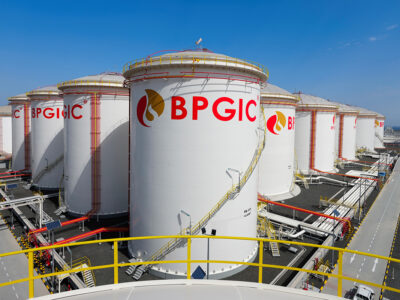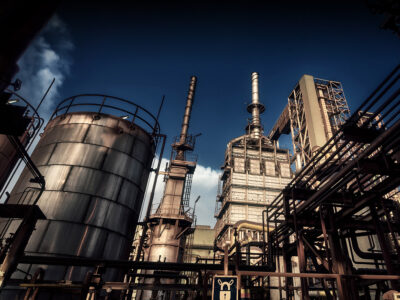Ricardo Tirado of Baker Oil Tools explains how five Baker Oil Tools InForce intelligent well systems (IWS) were installed in record water depths.
From August 2006 through February 2007, five Baker Oil Tools InForce intelligent well systems (IWS) were installed in record water depths of 8100 ft to 8900 ft in five high-rate, subsea, multi-zone gas wells in the Gulf of Mexico.
Since last August, five intelligent well systems have been installed successfully on long completion assemblies in four fields, saving 12 to 14 hours of rig time per installation.
The IWS bottom hole assemblies (BHA) were the first of their length (93 ft), to be pre-assembled and tested, then installed as a single unit, rather than multiple components. This installation technique saved an estimated 12 to 14 hours of rig time on each of the five wells.
IWS completion design
With development drilling and completion taking place from a dynamically positioned drillship, the completion design was based on the needs of the operator: remote control of two frac-packed zones, to be produced in sequence; surveillance of downhole conditions, and flow assurance. Optimising the installation process to reduce rig time and ensure reliability and safety was also important to the success of the project.
The InForce intelligent well system was selected based on its functionality, inherent simplicity and proven reliability. The system as selected comprised two HCM-Plus 4½-inch flow control valves: one shrouded to control flow from the lower zone, and the other non-shrouded to control the upper zone; a 9- inch by 4 ½- inch feed-through Premier removable production packer V0 (zero gas leakage) rated as per ISO 14310, and a splice sub placed above the packer to house all control line and cable splices.
The intelligent well system is hydraulically operated and controlled from the surface to achieve open/close functionality for multi-zone applications. The sub-sea control system with hydraulic control lines operates a balanced hydraulic piston within each valve, achieving an axial load exceeding 15000 lb both upward and downward, which helps overcome debris and scale buildup.
A diffuser ring system and equalising slots allows repetitive opening under high differential pressures, and a testable jam nut connection is designed to ensure sealing integrity of the control chamber under extreme conditions. The valves’ gas-tight, chemically inert seal system is protected from erosion. The removable production packer has no body movement during setting. This protects control lines fed through the packer during setting. A slip-element-slip configuration provides permanent packer-like performance, but with removability.
Three downhole permanent pressure/temperature gauges, provided by a third-party supplier, were incorporated into a triple gauge mandrel as part as the bottom hole assembly (BHA). These three gauges provide real-time pressure and temperature monitoring of each zone, as well as the tubing. A dual chemical injection system, also provided by a third party, was used to allow treatment against potential scale and paraffin accumulation.
The water depth – the deepest of any intelligent well system installation to date – required using a deep-set safety valve. Baker’s nitrogen-charged Neptune safety valve was the preferred choice. A common pressure charge in the nitrogen chamber was used throughout the field to standardise the safety valve operating pressure for all of the wells.
Baker Oil Tools and the operator devoted 18 months to designing and testing the long sub-assembly installation approach.
In addition to safety valve selection, deep water presents a challenge for completion space-out. A 40-ft-long seal assembly was used in combination with a 20-ft seal bore extension to compensate for any potential space-out error.
New technical limits
Water depths and subsea infrastructure on this project required a standardised development plan, designed around a single set of parameters and standardised equipment for all wells. To improve installation time and reduce rig-critical path time, the project operator instituted a new installation approach using an extra-long completion assembly. The approach involved pre-assembling and testing 90-ft-plus completion assemblies and then installing them as a single unit rather than multiple components.
Intelligent well systems require a number of control lines and cable connections that are normally pressure tested after make-up. This process requires considerable time, which varies depending on the number of zones completed and instruments used. The risk/reward relationship of the proposed long completion assembly technique promised big dividends if the approach was successful, but it also required careful planning to ensure that added risk was mitigated.
Baker Oil Tools and the operator devoted 18 months to designing and testing the long sub-assembly installation approach. During this time, the well was completed on paper with focus on multi-disciplinary teamwork. Involving rig personnel in advance of the installation also contributed to the success of the operation. Design efforts focused on equipment, as well as lifting and transportation devices. Issues considered included: picking up long assemblies on the single-activity drill ship, eliminating bending and damage to intelligent well components, testing components on deck prior to going in hole, and transportation.
The intelligent well system was incorporated into a single 93-ft long BHA to expedite the installation process and save rig time. The BHA consisted of the IWS system, triple gauge mandrel, chemical injection mandrel, depth correlation sub and pup joints.
All control lines, cables and chemical injection lines were connected and tested prior to lifting the assembly to the rig floor. Having all lines attached to the BHA prior to its make-up to the production tubing meant that the BHA could not be rotated. A Baker quick connect provided a means to connect the assembly to the tailpipe without the need for rotation.
Compensating slings were used to handle the BHA. To assure the functionality of the slings, procedures were adopted and lift tests were performed prior to shipping the equipment offshore. Finding the balance point for the sub-assemblies and rehearsing the process several times onshore proved valuable when performing the job at the rig site. An extra-long tool basket was also built to transport the sub-assembly and provide protection and stability during handling operations.
Five intelligent well systems have been installed successfully … saving 12 to 14 hours of rig time per installation.
Timed couplings were used to align key components to facilitate the installation of the multiple lines through by-pass slots and control line ports. All control lines were fed through the packers and connections made up and tested prior to shipping the BHA offshore. Pre-testing also contributed to enhanced reliability, as the connections were made in a controlled shop environment without time constraints.
A system integration test (SIT) performed prior to installation ensured problem-free interfacing between down hole and sub-sea components. The SIT included the intelligent flow control valves, down hole gauges, control line flat pack, tubing hanger and sub-sea control module. During the SIT, system compatibility was proven and response time of the control valves was measured.
Successful installations
Since last August, five intelligent well systems have been installed successfully on long completion assemblies in four fields, saving 12 to 14 hours of rig time per installation.
Rig teams have performed other pre-installation functions during pre-installation assembly testing. Fewer connections and pre-assembling and testing in controlled shop conditions away from the rig critical path have resulted in improved reliability and assembly integrity, as well as reduced risk.
Riser skate testing of the first system required two hours. Subsequent system test times have been cut to an hour and 15 minutes, with pick-up and stabbing requiring as little as 15 minutes.
Working from a riser skate and using extra-long assemblies where possible has been expanded to BHAs for well bore cleanout, tubing-conveyed perforating, pulling packer plugs and wear bushings, gravel pack assemblies, and safety valves and tubing hangers. So far, the development project is on schedule and under budget.




